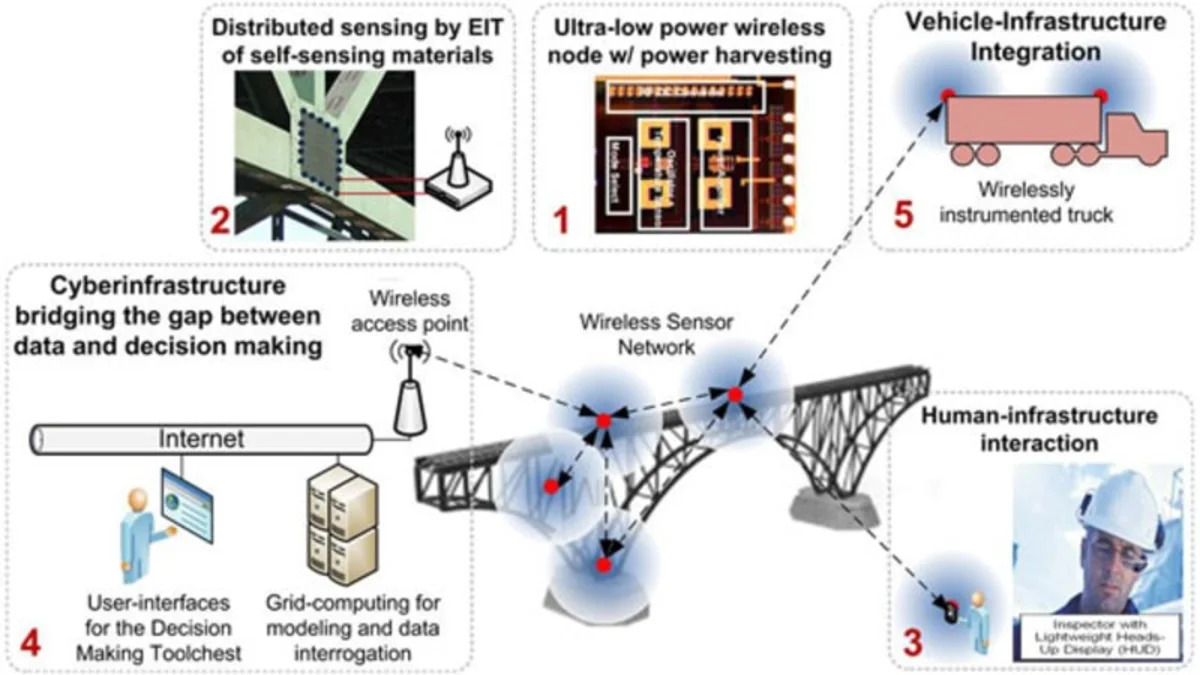In an effort to prevent deadly accidents like the collapse of the I-35 bridge in Minneapolis in 2007, a project led by the University of Michigan is developing various sensing systems that will eventually lead to the development of "smart bridges." Most bridge monitoring today is done visually. Unfortunately, this type of human inspection is often unable to determine the structural health of a bridge with regards to the effects of corrosion, heavy loads, or vibrations on the structure over time.
The new five-year project, with a price tag of $19 million, will develop a sophisticated infrastructure monitoring system to be installed on several test bridges. The innovative systems include electrically-conductive concrete (changes in conductivity along the span would signal a weakness), wireless nodes to monitor unusual vibrations, and a nanotube-based "sensing skin" to detect cracks and corrosion. Sensor-laden vehicles would also travel the bridge to measure the span's reaction to heavy loads.
The real-time monitoring is beneficial, but there are more wide-scale plans for the technology. Jerome Lynch, assistant professor in the Department of Civil and Environmental Engineering, says that if the program were to be rolled-out nationwide, researchers would be able to make statistical comparisons between bridges. This type of data would help engineers develop safer spans to prevent future disasters.
[Source: University of Michigan, image by UMTRI)
The new five-year project, with a price tag of $19 million, will develop a sophisticated infrastructure monitoring system to be installed on several test bridges. The innovative systems include electrically-conductive concrete (changes in conductivity along the span would signal a weakness), wireless nodes to monitor unusual vibrations, and a nanotube-based "sensing skin" to detect cracks and corrosion. Sensor-laden vehicles would also travel the bridge to measure the span's reaction to heavy loads.
The real-time monitoring is beneficial, but there are more wide-scale plans for the technology. Jerome Lynch, assistant professor in the Department of Civil and Environmental Engineering, says that if the program were to be rolled-out nationwide, researchers would be able to make statistical comparisons between bridges. This type of data would help engineers develop safer spans to prevent future disasters.
[Source: University of Michigan, image by UMTRI)


Sign in to post
Please sign in to leave a comment.
Continue